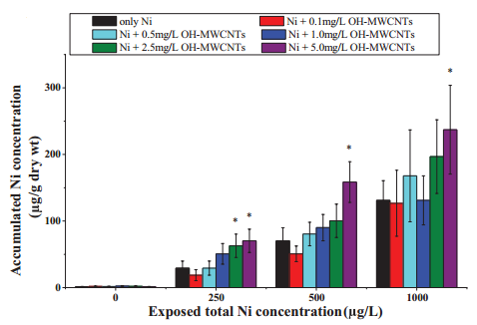Some studies have shown that the presence of nanoparticles can be the source of modifications of the preexisting pollutant toxicity.
For example, the heavy metals such as nickel can absorb on carbon nanotubes. This adsorption facilitates the ingestion by living organisms and the toxicity increase of heavy metals [C. Wang et al., Environmental Toxicology and Chemistry 33 (2014) 2522-2528].
Despite some results, it is too early to draw general conclusions as regards the role and the mechanisms of action of nanoparticles. But, the studies agree on the fact that in a liquid environment, the presence of nanoparticles produce a more important accumulation of polluting's in the organisms. Due to nanoparticles or through their role of vector for contaminating, risks are present all along the food chain.



